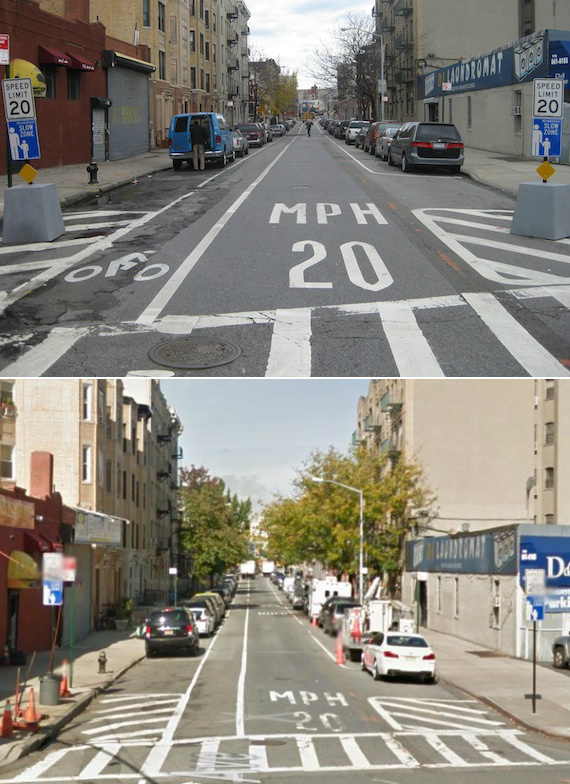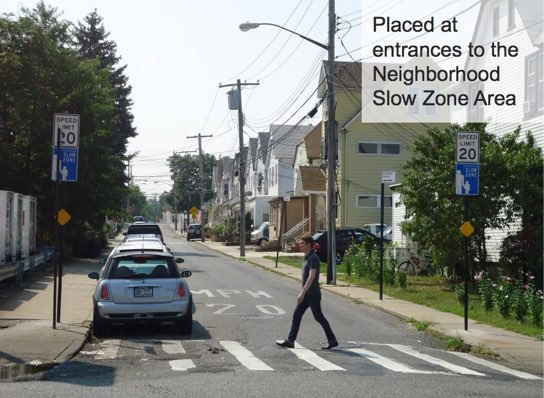
Launched in 2011, the DOT Neighborhood Slow Zone program is intended to keep drivers from exceeding 20 mph in residential areas. Strengthening and expanding the program should be a key aspect of Vision Zero, but instead, DOT has watered down some Slow Zone features, apparently in response to motorist complaints about curbside parking.
This week DOT unveiled a proposal for a new Washington Heights Slow Zone, west of Broadway from W. 179th Street to Bennett Avenue, to the Manhattan Community Board 12 transportation committee. According to the DOT presentation [PDF], the residential area within the proposed zone was the site of one traffic fatality, one serious pedestrian injury, and four serious injuries to vehicle occupants from 2007 to 2015.
“We all have young children, preschool age or younger,” resident Andrea Martinsen told DNAinfo, referring to parents who attended the Monday meeting. “We find that navigating the neighborhood can be really difficult, especially when it comes to cars speeding and spots where there are no crosswalks."
Another resident who supports the plan told DNAinfo that some people initially opposed slowing drivers down if it meant losing parking spots. But DNA's Lindsay Armstrong reports that "the DOT has since changed the way that it installs signage to decrease the impact on parking."
A look at existing Slow Zones reveals that DOT is pushing "gateway" signage from the roadbed onto the sidewalk. In Inwood, where Manhattan's first residential Slow Zone was implemented, prominent parking lane signage alerting drivers that they were entering the 20 mph zone was later shunted to sidewalks. The same thing happened in the Claremont section of the Bronx, the first neighborhood Slow Zone in the city.
And photos in the Washington Heights presentation show that in some cases the agency is forgoing painted curb extensions at intersections that might claim a parking space or two:

DOT calls Slow Zone gateway signage one of three "main tools," along with street markings and speed humps, to reduce driver speeds. Moving the signs off the street, where they visually narrow the road and stand close to motorists' eye level, makes them harder for drivers to see.
DOT has not replied to a request to confirm that it is now agency policy to install Slow Zone signs on sidewalks and if the intent is to preserve parking.
It could be one reason DOT moved the signs is because drivers were crashing into them (I saw one damaged parking lane sign in Inwood, before it was moved). But if so, that's all the more reason to install permanent engineering measures, like concrete bulb-outs, rather than relegating Slow Zone signs to the margins.
Update: DOT sent us the following statement:
The gateway signs that we put in the roadway in prior Neighborhood Slow Zones just behind the crosswalk -- precipitating a loss of a bit of parking -- were hit and damaged at an unsustainable rate and could put pedestrians at risk so we now place them on the sidewalk. The signs are still quite visible.





